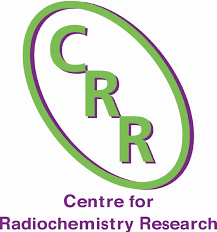I have often posted articles about problems with the disposal of nuclear waste. This is one of the greatest issues with the use of nuclear power. The waste from nuclear power plants has radioactive isotopes that are dangerous for thousands of years. Many schemes to bury the waste and/or process it to make it less dangerous have been proposed. Today I am going to talk about research on the nature of uranium compounds that might help with the disposal of nuclear waste.
Researchers at the Centre for Radiochemistry Research (CRR) at the University of Manchester in the U.K. are working on describing the quantitative modeling of the electronic structure of a family of uranium nitride compounds. Studying the electronic structure of these complexes is difficult4 because inter-electronic repulsion, crystal field, and spin–orbit coupling effects can be of similar magnitude. This new model should help with disposal of nuclear waste by improving separation and recycling technologies by leading to an improved understanding of the way in which actinide complexes interact with extractants which are used in separating the different components of nuclear waste.
The Co-Chairman of the CRR said, "quantifying the electronic structure of these elements in molecules is a major challenge because many complex electronic effects become very important and of similar magnitude to each other with heavy elements. This makes their modeling very complex and much more difficult than for more routinely probed elements such as the transition metals.
This means that traditional descriptions of the electronic structure of actinide elements are often of a qualitative nature - but this is precisely the area where quantitative models are needed because our understanding of core chemical concepts become increasingly nebulous at the foot of the periodic table."
Some of the researchers at the CRR had previously found that some uranium nitrides and uranium oxo molecules were essentially the same except for the a single nitrogen atom being swapped with a single oxygen atom. The symmetry of the molecular complexes and the oxidation state of the uranium ions made them ideal candidates for developing a quantitative model of electronic states.
In order to proceed with their project, the researchers needed to produce a large family of molecules but existing methods of synthesis were not reliable. Fortunately, the researchers were able to develop a new way to reliably synthesize the uranium complexes that they needed. A family of fifteen uranium nitrides and oxo compounds was prepared.
Important information about the lowest electronic states of the molecules was obtained through the use of variable temperature magnetization and electron paramagnetic resonance spectroscopy. Near-infrared spectroscopy was used to probe electronic transitions into energy states above the low levels studied with the first two processes. These three techniques allowed the researchers to build comprehensive pictures of the full electronic structures of the molecules.
Further research into the interaction of uranium nitride and oxo complexes with extractants used in separation and recycling of nuclear waste will be aided by this new understanding of the behavior of electrons in these uranium complexes.
